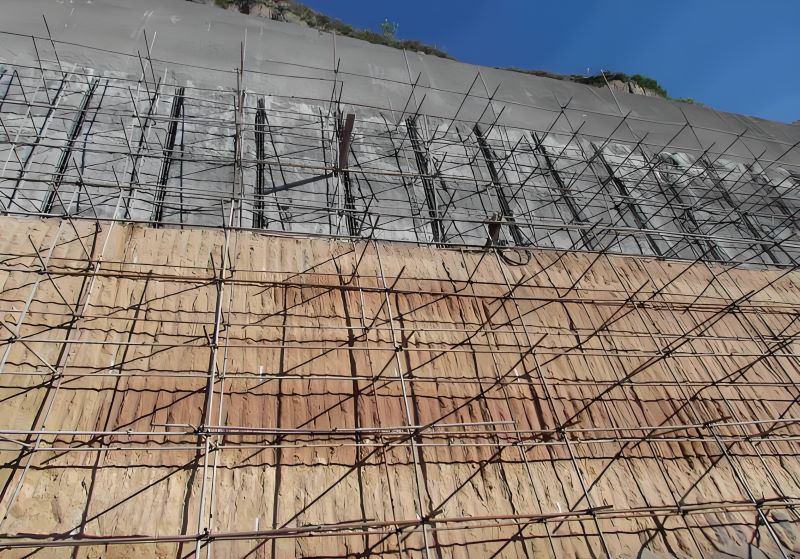What is Anchor Bolt Support? Anchor bolt support is a reinforcement and support method used in surface engineering projects like slopes and deep foundation pits, as well as in underground construction such as tunnels and mining chambers. It primarily involves inserting anchor bolts into the rock or soil to connect unstable materials with stable strata. The anchor bolts limit the deformation and displacement of the soil or rock by utilizing the frictional force, bonding strength between the bolt and the surrounding medium, and the tensile strength of the bolt, thus maintaining the stability of the geotechnical structure.

Anchor bolts generally consist of three parts: the rod body, the anchor body, and the anchor head. The rod body is typically made of materials like rebar or steel pipes. The anchor body is usually fixed in place in the rock or soil by grouting, while the anchor head is used to connect the anchor bolt to the support structure.
Basic Principles of Anchor Bolt Support
Anchor bolt support works by drilling holes in the rock or soil, inserting steel bars or steel strands, and filling the gaps with grouting materials. This process creates a strong bond between the anchor bolt and the surrounding medium, enhancing the stability of the surrounding rock or soil.
Functions of Anchor Bolt Support
1. Suspension Function: It suspends unstable rock layers onto solid and stable strata to prevent them from falling.
2. Combination Beam Function: It connects layered rock formations using anchor bolts to form a composite beam, increasing the rock's bending resistance.
3. Reinforced Arch Function: It forms a reinforced arch around the tunnel, improving the tunnel’s stability.
Advantages and Applications
Anchor bolt support is widely used in mining, tunneling, water conservancy, and other engineering fields due to its simplicity in construction, low cost, and effective results. Through prestressing, it tightly integrates the structure with the strata, enhancing its stability and load-bearing capacity, thereby ensuring the safety of the project.




